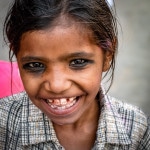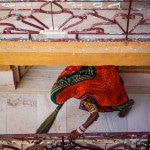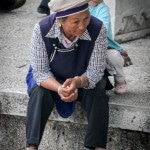International Day Of The Girl Child can inspire us all to change
Each year, 11 October is designated by the United Nations as International Day Of The Girl Child, “to recognise girls’ rights and the unique challenges girls face around the world”.
To celebrate, here is a gallery of girls and women I have seen and photographed around the world. Their situations all differ, but when you look at these images, just think to yourself: “Why would I think any less of these people than I would a person of the male gender?”
- A young girl in Shangri-la smiles at home. She is lucky to have a home and loving family, which is not the right of many young girls in China just yet.
- A girl smiles for the camera after participating in Holi festivities in Jaisalmer, India.
- A young mother and her new child at a women’s market in Central Vietnam | Foraggio Photographic
- A young Cuban girl poses for me outside her small home in Havana. She was a delightful kid, full of energy and hope.
- Ladies in Lijiang, perform traditional dance in the town square.
- Mosuo women around Lugu Lake. This ethnic minority is also known as The Kingdom of Women, where only girls are considered as heirs.
- A young girl cycles home in the Hue region of Vietnam | Foraggio Photographic
- My partner, Jacalin, pictured on the way to the slopes in Japan. She is without doubt one of the strongest and most inspiring women I have ever met. Jacalin is a Chinese migrant to Australia, sent here aged 12 with nobody else but her 13-year-old sister in search of a better life thank would have been afforded to them in China.
- A street performer in Cartagena, Colombia. The smile was priceless.
- A woman hangs laundry at Dhobi Ghat in Mumbai, the world’s largest non-mechanised facility of its kind in the world. Women hand, dry and iron clothes here, while the men undertake the more physical act of washing the clothes and many other items there each day.
- A woman stops for the camera in Udaipur, India.
- Two women chat while washing clothes and their hair in the lake at Udairpur, India.
- A woman sweeps her balcony in Jodhpur, India.
- A girl and her grandmother relax in Lijiang, China.
- A Guzheng performer in Chengdu, China.
- My mother, Una, enjoying the view from the London Eye. She is a constant source of inspiration to me, and I’m am eternally grateful for her guidance through life.
- A street vendor sells fruit on the streets of Cartagena in Colombia.
- More than 1 million people work in the tea industry in Sri Lanka, and it all starts in similar locations as the one seen here, at the factories in Ella.
Thankfully, many of us don’t, but too many others still do. And when it comes to transgender people, that becomes far worse. Today is a time to think about how you can put an end to such discrimination.
In the shadow of the recently ratified Sustainable Development Goals, gender equality has been high on the minds of anyone with a social conscience. UN Secretary-General Ban Ki-moon said: “The newly adopted Sustainable Development Goals rightly include key targets for gender equality and the empowerment of all women and girls. They offer an opportunity for a global commitment to breaking intergenerational transmission of poverty, violence, exclusion and discrimination — and realising our vision of a life of dignity for all.”
The appearance of Malala Yousafzai on stage at the Global Citizen Festival in New York’s Central Park was as inspiring as anything the multitude of superstar musicians were able to produce around her.
While Malala’s own story of courage and triumph over adversity is known around the world, until such stories become less commonplace globally, we will not have done our work in terms of promoting young girls in the same way we do boys, pushing them into areas that might be considered unsuitable by those that do not understand what gender equality truly means.
The UN states: “Adolescent girls have the right to a safe, educated, and healthy life, not only during these critical formative years, but also as they mature into women. If effectively supported during the adolescent years, girls have the potential to change the world – both as the empowered girls of today and as tomorrow’s workers, mothers, entrepreneurs, mentors, household heads, and political leaders.”
This couldn’t be more true. While only half the world is allowed to participate in global tasks, humanity will never reach its full potential. While two out of every three illiterate people in the world are female, we cannot function properly as a society. There are many more equally damning stats to demonstrate how far we have to go.
But we can get there, together. The UN’s statement continues.
“An investment in realising the power of adolescent girls upholds their rights today and promises a more equitable and prosperous future, one in which half of humanity is an equal partner in solving the problems of climate change, political conflict, economic growth, disease prevention, and global sustainability.”
In my travels around the world, I have visited a number of places where gender equality remains a huge issue. India, Sri Lanka, Vietnam, China, and let’s not pretend we don’t see it in so-called first world countries, too, even those we live in. Violence against women in Australia has become a big talking point of late, and we see women exploited, abused and mistreated all around the world.
Global Goal No.5 is devoted to ensuring gender equality is truly realised by 2030.
“Women’s status in society has become the standard by which humanity’s progress toward civility and peace can be measured,” says Mahnaz Afkhami, one of the world’s most inspiring women, and Iran’s first Minister of Women’s Affairs, a role she took up in 1975.
To put that into perspective, only one other woman in the world held similar office at that time – Françoise Giroud, in France. And to demonstrate that we can manage to promote more women into power, consider this.
Iran and other Muslim nations are traditionally associated with having enormous gender equality issues, but it’s worth remembering the world’s three most populous Muslim nations have all at some time had female leaders – Indonesia, Pakistan and Bangladesh. Indeed Islamic scholars argue that the Qur’an gives women the right to participate in public affairs. The world’s first two female Prime Ministers were from similarly ill-thought-of countries – Sri Lanka (1960) and India (1966). However currently, just eight countries have female heads of government. Only 11 other nations have female presidents. That’s less than 10 per cent of the world’s 196 nations being led by women. How many female Presidents has the United States had? A position it proclaims to be the “leader of the free world”. You all know the answer is zero.
Too few have followed in the footsteps of female leaders in history, and as we reflect on what today means, it’s worth hoping that many more will be afforded the opportunity to stand on an equal footing with all the men who have been taking such roles over the past many decades.
Would the world be a more peaceful place with more women in positions of influence? Surely it’s worth finding out.
Become a Global Citizen today, and make a pledge to achieve Global Goal No.5.



















